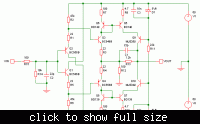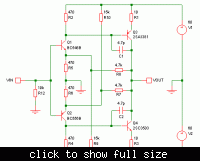mahin91
Junior Member level 1

hi everybody,
i want to design an amplifier for amplify output of signal generator about 10vp
_p and output amppedance of 600 ohm, i want 100vp_p output with about 300kHz.
can anyone help me?
thank you,
i want to design an amplifier for amplify output of signal generator about 10vp
_p and output amppedance of 600 ohm, i want 100vp_p output with about 300kHz.
can anyone help me?
thank you,



